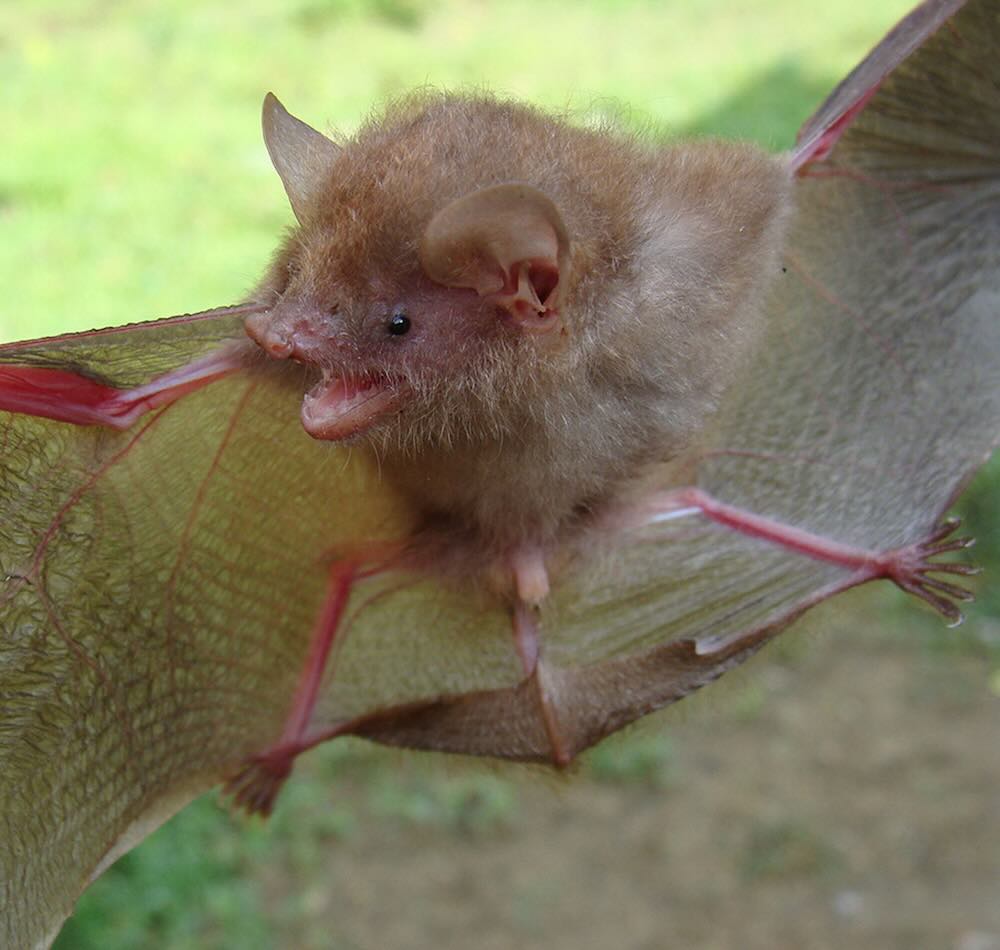 Tube-nosed bat-Murina luzonensis (Credit: D. Balete / SWNS)
Tube-nosed bat-Murina luzonensis (Credit: D. Balete / SWNS)
Six new species of bats have been discovered inside the protected forests of the Philippines—just in time for Halloween.
The tube-nosed bats were identified by an international research team that pointed out how the nocturnal – and slightly spooky – group of mammals is incredibly diverse.
“I’m astonished at how much we still don’t know about the natural world, such as how many bat species there are,” said one of the researchers, Dr. Burton Lim, assistant curator of mammals at the Royal Ontario Museum in Toronto (ROM).
The Philippines was known to have 79 species of bats – even before the latest discovery.
“Before we started our research, there were only two species of tube-nosed bats reported from the Philippines, but we did find five new species that were masquerading as (one of those).”
Eating only insects, tube-nosed bats are found throughout Asia and they depend on forested areas for roosting.
Even without deforestation, this type of bat is notoriously elusive, says study co-author Professor Jodi Sedlock, of Lawrence University in Wisconsin.
 Tube-nosed bat Murina baletei (Credit: D Balete / SWNS)
Tube-nosed bat Murina baletei (Credit: D Balete / SWNS)
“As a result, it’s deeply satisfying to see our collection make such an important contribution to Philippine biodiversity studies.”
“I’m eager to learn what these newly described tube-nosed bats do with their tube-like nostrils that, presumably, offer them directional smell detection.”
Halloween is celebrated less in the Philippines than in the UK and US, but Filipinos have their own bat-related folklore about the ‘aswang’ – frightening and shape-shifting monsters inspired by fox bats.
In China, bats are thought to bring good luck; in India they bring fortune and wealth—and they were even worshipped as deities in Guatemala and Mexico.
HALLOWEEN LOVERS: Ring Camera Video Catches Teenage Trick-or-Treaters Refilling Empty Candy Bowl: ‘It feels really good’ – WATCH
A study of the six new species—Murina alvarezi, Murina baletei, Murina hilonghilong, Murina luzonensis, Murina mindorensis, and Murina philippinensis—was published in the journal Zootaxa, by the Canadian scientists at ROM, and American researchers from the Field Museum in Chicago and Lawrence University.
The first of the new species was named in honor of James Alvarez, a young bat biologist and student with the University of the Philippines who tragically died during fieldwork in 2018.
MORE BAT NEWS:
• Bats Hold Vital Clues for Cancer Prevention as Scientists Study Their ‘Extraordinary’ Immunity
• Struggling Bats Can Now Fly Freely Through Countryside Thanks to First-of-Their-Kind Street Lights
• Bats Are Recovering in a Big Way After Decimation by White-Nose Syndrome: Numbers Grow for the 3rd Year
Another is named after prominent Filipino biodiversity scientist Danilo ‘Danny’ Balete, who had been involved since 1989 with the Field Museum’s Philippine Mammal Project.
To determine their uniqueness, researchers examined tooth pattern, skull shape, fur banding, and other visible characteristics, and conducted genetic analyses in the ROM Laboratory of Molecular Systematics.
KNOW ANY BATMEN? Share The Spooky News With Them…
